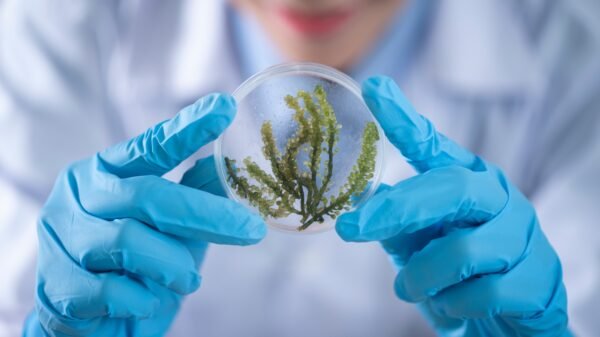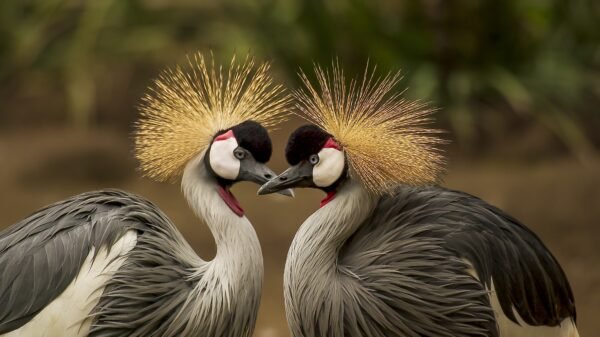
From Marie Curie to Rosalind Franklin, women have made incredible contributions to the world of science. Despite their groundbreaking achievements, many female scientists still face stereotypes and bias in the field today. But as we celebrate Women’s History Month this March, let’s take a moment to recognize and uplift the brilliant women who continue to push boundaries and break down barriers in STEM fields. In this blog post, we’ll explore some common stereotypes and biases that women in science encounter, along with strategies for overcoming them. So grab your lab coat and safety goggles – it’s time to dive into the fascinating world of Women in Science!
Introduction: Women in Science
Women have made great strides in the field of science over the past few decades. While there is still room for improvement, women are now better represented in science than they have ever been before.
There are many reasons why women have traditionally been underrepresented in science. One reason is that women have often been excluded from educational opportunities in science and math. Another reason is that women scientists have often faced bias and discrimination, both from their male colleagues and from the scientific establishment itself.
Fortunately, things are changing for the better. More and more women are being given the opportunity to pursue careers in science and math. And as more women enter the field, they are helping to break down the barriers that have held them back in the past.
The future looks bright for women in science. With more opportunities than ever before, there is no limit to what we can achieve.
Historical Challenges Faced by Women in the Science
Historical challenges faced by women in the sciences are numerous and range from sexist attitudes to a lack of opportunities. In the early days of science, women were often not taken seriously as scientists and were excluded from many scientific institutions. This began to change in the late 19th century with the rise of women’s rights movements, but even then, women scientists faced significant obstacles.
For example, Marie Curie, one of the most renowned scientists of her time, was nominated for the Nobel Prize in Physics in 1903 but was rejected because she was a woman. It wasn’t until 1911 that she finally won the Nobel Prize—but even then, it was only awarded to her for her work on radioactivity and not for her groundbreaking work in physics.
It wasn’t until the mid-20th century that attitudes towards women in science began to change significantly. In 1963, American astronaut Valentina Tereshkova became the first woman in space—a feat that wasn’t repeated until Sally Ride went to space 20 years later. In recent years, more and more women have been making waves in science: In 2015, British physicist Dame Jane Francis became the first woman to lead Britain’s Royal Society; and in 2018, American astrophysicist Janet Emson became only the second woman ever elected as president of the International Astronomical Union.
Despite these advances, there is still a long way to go before gender equality is reached in science
Current Challenges Faced by Women in the Science
There are a number of challenges faced by women in the sciences. One of the most significant is the stereotype that science is a masculine field, and that women are not as capable as men in this area. This can lead to bias against women in hiring and promotion decisions, and can make it more difficult for women to be taken seriously as scientists.
Another challenge faced by women in the sciences is the lack of role models and mentors. Women are often underrepresented in senior positions in science, and this can make it difficult for younger women to see themselves as future scientists. This lack of visible role models can also lead to impostor syndrome, where women feel like they are not qualified to be scientists because they do not see anyone like them in positions of authority.
These challenges can be overcome with effort and determination. Women must continue to fight stereotypes and bias, and work to create a more inclusive environment in the sciences. By supporting each other, mentoring young women, and promoting visibility of successful women scientists, we can help create a more level playing field for all.
Strategies for Fighting Gender Bias and Stereotypes in the Sciences
1. Acknowledge that gender bias and stereotypes exist.
2. Be aware of your own biases and take steps to avoid acting on them.
3. Advocate for change within the scientific community to ensure that women are respected and valued equally.
4. Support and encourage women scientists through mentorship and other forms of professional development.
Success Stories of Female Scientists
The world of science is one that has been long dominated by men. But in recent years, more and more women have been breaking through the barriers and stereotypes to become successful scientists in their own right. Here are just a few of their inspiring stories.
Dr. Mae Jemison was the first African American woman to be admitted into NASA’s astronaut training program. She went on to become the first African American woman in space when she flew on the Space Shuttle Endeavour in 1992. Since then, she has continued to break new ground as a scientist, entrepreneur, and advocate for STEM education.
Dr. Katherine Johnson is a mathematician who made critical contributions to the success of early space missions for NASA. Her work was essential to the success of John Glenn’s historic orbital flight in 1962. In 2015, she was awarded the Presidential Medal of Freedom for her outstanding achievements.
Dr. Rita Levi-Montalcini was an Italian neurologist who made fundamental discoveries about the growth of nerve cells. In 1986, she received the Nobel Prize in Physiology or Medicine for her work. She continued working well into her 90s and died at the age of 103 in 2012.
These are just a few of the many inspiring stories of female scientists who have overcome bias and discrimination to achieve great things. Their stories show that anything is possible if you follow your dreams and never give up.

Resources to Support Women in the Sciences
There are many organizations and programs that support women in the sciences. Some of these resources include:
-The Association for Women in Science (AWIS): This organization is dedicated to achieving equity and full participation for women in science, technology, engineering, and math (STEM). They offer membership, networking, and leadership opportunities, as well as resources and advocacy on issues affecting women in STEM.
-The Society for Women in Science and Engineering (SWSE): This society is committed to supporting women in all fields of science and engineering. They offer a variety of resources, including scholarships, mentorship programs, and networking events.
-The Women in Science and Engineering Leadership Institute (WISE): WISE is a national initiative that works to increase the representation of women in science and engineering leadership positions. They offer programs and resources on topics such as career advancement, work/life balance, and effective networking.
Conclusion
The gender gap in science is slowly closing as more and more women are entering the field. This is a positive step forward but there still remains much work to be done to overcome stereotypes and bias against female scientists. Women must continue to fight for their rights and recognition, working together with male allies to create a better future for all those who wish to pursue a career in science. We can only hope that one day this gender disparity will be eradicated completely, allowing for true equality among disciplines and genders within the scientific community.







